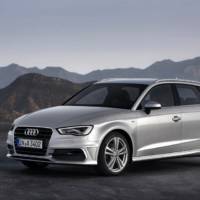The elegant design possibilities are the most visually evident – but far from the only – advantages of Volvo Car Group’s (Volvo Cars) new Scalable Product Architecture (SPA). The ingenious new architecture also enables the company to reinforce its safety leadership and increase its momentum towards the aim that by 2020, no one should be killed or seriously injured in a new Volvo.
Recent independent data from STRADA (Swedish Traffic Accident Data Acquisition) show that modern Volvos have close to 60 per cent lower injury rates compared to the average modern vehicle in Sweden, which in turn has one of the lowest injury rates in the world.
The new SPA architecture enables significant improvements both when it comes to offering protection in worst-case scenarios and when creating innovative features that support the driver in avoiding accidents.
The new architecture includes a ground-breaking new electrical architecture that elevates the car’s intelligence level significantly. The architecture is designed to make it easy to add sophisticated functions and rapidly implement new technology in fast-moving areas such as microprocessor, sensor and camera technology.
In principle, the electrical architecture consists of a network with four domain masters – vehicle dynamics, safety, car body and infotainment.
The driver is literally the core of Volvo Cars’ holistic approach, which is based on real traffic situations. He or she is surrounded by 360° zones extending from technology cushioning the driver to putting him or her in contact with the world.
The driver and passengers are embraced by solutions that are designed for intelligent absorption of energy in various types of collisions. The safety technologies – such as safety belts, pre-tensioners, whiplash protection system, airbags and inflatable curtains – are continuously being enhanced.
In cars built on the new SPA architecture, the smart belt pre-tension systems increase the retention of the occupants before and during the event of a collision. For example, the rearward-facing radar is used to detect a rear impact. This allows the safety belts to be tightened in advance in order to keep the occupants in place.
The new features also include detection and auto brake for large animals and pedestrians also when driving in the dark.
The sensors used by the collision-avoiding solutions are also part of the extended range of features that makes the drive more enjoyable by simplifying complex traffic situations. This includes Adaptive Cruise Control with steer assist, introduced in the upcoming all-new XC90. The car automatically follows the vehicle ahead in queues. The Scalable Product Architecture is also designed to accommodate the implementation of autonomous technologies all the way to self-driving cars.
To exchange communication with other vehicles, the infrastructure extends the driver’s theoretical field of vision beyond the capacity of the camera, radar and sensors. With this Car2Car and Car2Infrastructure technology in place, vital information can be shared and exchanged – creating a more comfortable and safer drive.
The technology opens up a multitude of safety and support possibilities, such as obtaining road friction information, advance warnings and detour options to avoid queues, creating a green light wave and finding free parking spots.
The modern desire to be constantly connected is moving into the car. This connectivity can be used to make driving safer and more comfortable – but bringing it into the driver’s seat is also a challenge from a safety perspective.
The desire to stay online may divert the driver’s focus from the road. This is a field where Volvo Cars believes that autonomous drive will play an important role. Not having to supervise the drive continuously in certain situations allows the driver to focus safely on something else.



